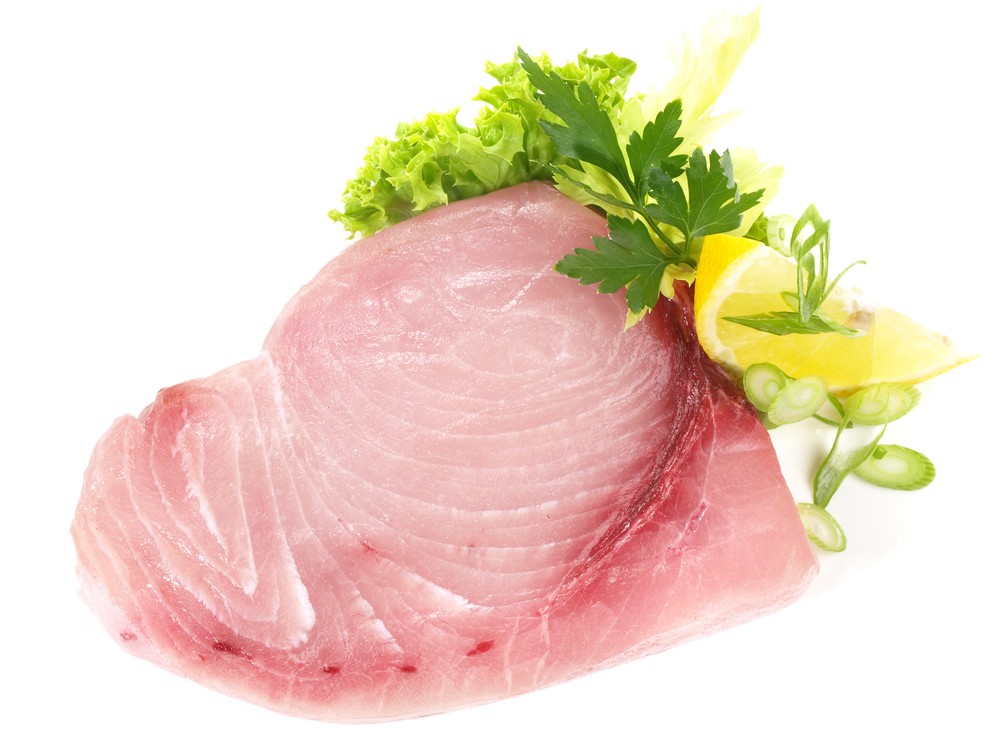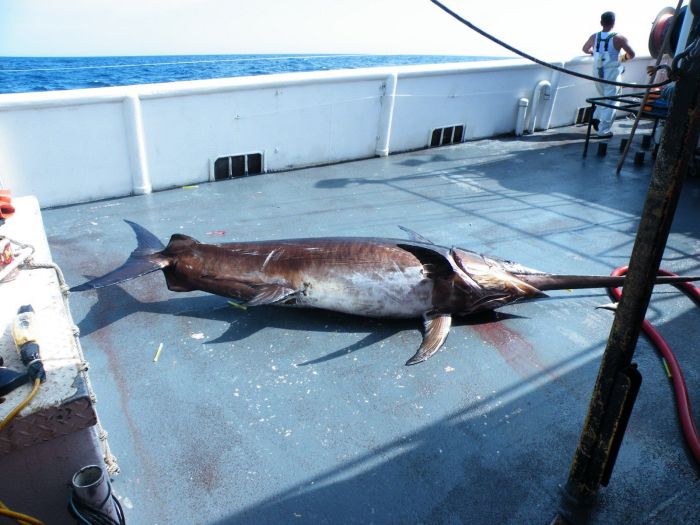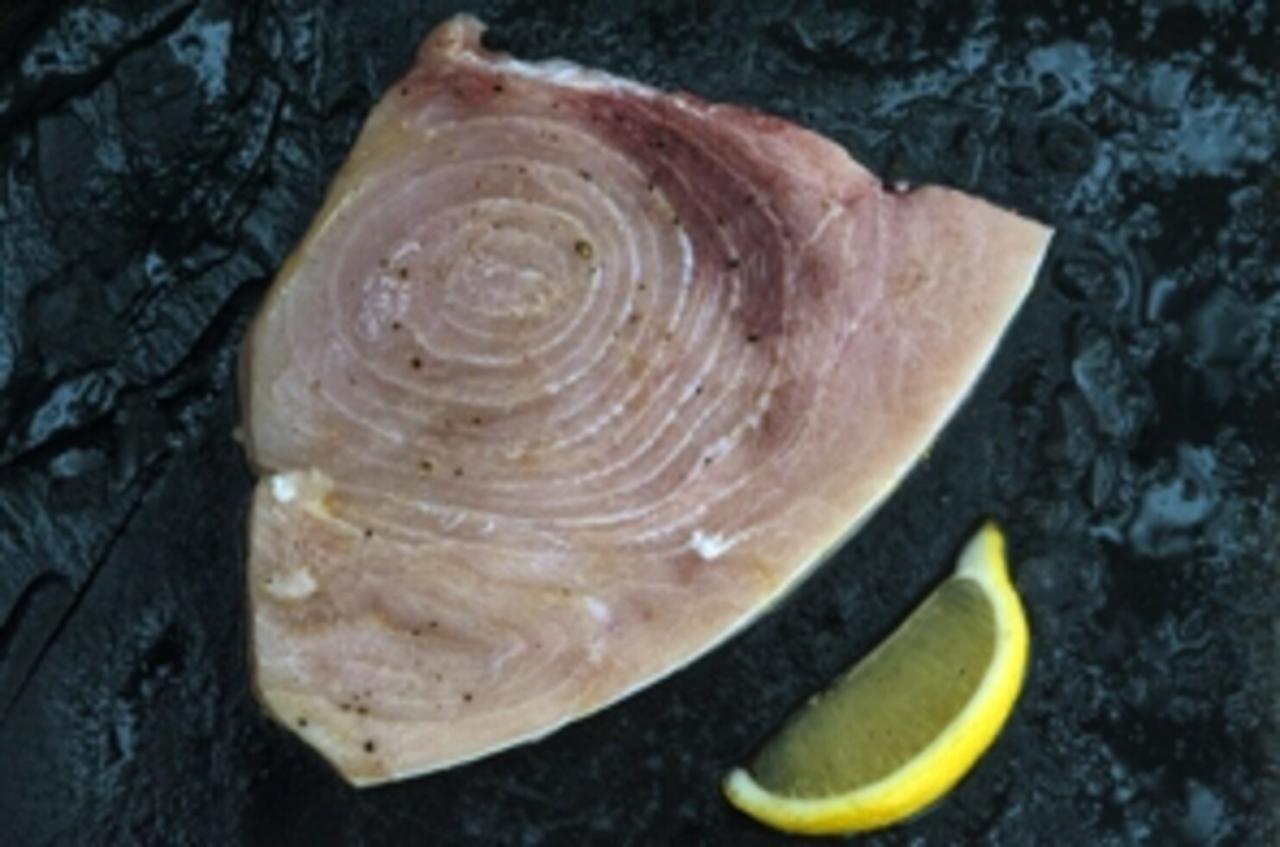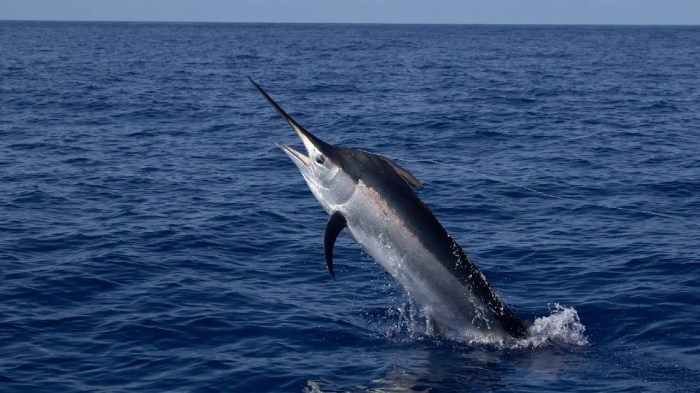Price of swordfish per pound – Embark on a culinary adventure as we delve into the intriguing world of swordfish pricing. From market dynamics to consumer preferences, this comprehensive guide will unravel the intricacies behind the price of this delectable seafood.
Swordfish, a highly prized fish renowned for its firm texture and rich flavor, commands a significant presence in global markets. Its price per pound fluctuates based on a multitude of factors, including seasonality, supply and demand, and the ever-changing landscape of consumer tastes.
Market Factors

The price of swordfish per pound varies depending on market conditions, including seasonality, supply and demand, and fishing region.
During peak fishing seasons, such as summer and fall, the supply of swordfish increases, leading to lower prices. Conversely, during off-seasons, the supply decreases, resulting in higher prices.
Major Swordfish Fishing Regions
Major swordfish fishing regions include the Atlantic Ocean, Pacific Ocean, and Indian Ocean. The Atlantic Ocean is the largest producer of swordfish, accounting for over 60% of the global catch. The Pacific Ocean and Indian Ocean contribute the remaining 40%.
The fishing method and regulations in each region also impact pricing. For example, swordfish caught using sustainable fishing practices, such as longline fishing, tend to command a higher price than those caught using less sustainable methods.
Quality and Grading
The quality of swordfish can vary significantly, affecting its price. Several factors determine swordfish quality, including size, freshness, and appearance.
Size
Larger swordfish are generally more expensive than smaller ones. This is because they are more mature and have a higher meat yield.
Freshness
Fresh swordfish has a bright red color and a firm texture. As swordfish ages, its color will fade and its texture will become softer. Fresh swordfish is more expensive than older fish.
Appearance
Swordfish with a clean, unblemished appearance is more expensive than fish with cuts, bruises, or other imperfections.
The price of swordfish per pound can vary depending on the season and availability. Speaking of availability, have you heard of the i have a dream soapstone ? It’s a unique and beautiful piece of art. Anyway, back to swordfish, the price per pound can also be affected by the size of the fish.
Quality Variation in Different Market Segments
The quality of swordfish can also vary depending on the market segment. For example, swordfish sold in high-end restaurants is typically of higher quality than swordfish sold in supermarkets.
Size and Weight

The size and weight of a swordfish significantly influence its market value. Larger fish are generally more valuable due to their higher meat yield and perceived desirability in the market.
Weight plays a crucial role in determining the price of swordfish. Heavier fish typically command higher prices as they provide more meat per pound. The weight of a swordfish is often used as a proxy for its overall size and quality.
Market Demand
The market demand for different swordfish sizes and weights varies depending on the intended use and consumer preferences. Larger swordfish are often preferred by commercial fisheries and restaurants due to their higher meat yield and suitability for large-scale processing.
Smaller swordfish, on the other hand, are popular among individual consumers and smaller-scale markets. They are often sold whole or in steaks and are suitable for home cooking and smaller gatherings.
Seasonality and Availability

Swordfish availability and price are influenced by seasonality, as their migratory patterns affect catch rates and market supply. Understanding these seasonal fluctuations is crucial for buyers and sellers.
Peak Fishing Seasons
Swordfish have specific peak fishing seasons that vary by region. In the North Atlantic, the prime season runs from May to September, while in the South Atlantic, it’s typically from November to March. These periods coincide with the swordfish’s spawning and feeding migrations, resulting in higher catch rates.
Impact on Pricing, Price of swordfish per pound
During peak fishing seasons, swordfish supply increases, leading to lower prices due to increased competition among suppliers. Conversely, during off-seasons, supply decreases, causing prices to rise as demand exceeds supply.
Historical Catch Rates
Historical swordfish catch rates provide valuable insights into market supply and pricing trends. Data from the National Oceanic and Atmospheric Administration (NOAA) shows that global swordfish catches have fluctuated over the years, influenced by factors such as fishing regulations, oceanographic conditions, and market demand.
Analyzing historical catch rates helps stakeholders anticipate market supply and adjust their pricing strategies accordingly.
Processing and Transportation: Price Of Swordfish Per Pound

Swordfish undergoes various processing methods before reaching markets, influencing its price. These methods include:
Filleting
- Swordfish is filleted to remove the skin, bones, and dark meat, resulting in boneless, skinless fillets.
- Fillets command higher prices than whole fish due to their convenience and reduced waste.
Steaking
- Swordfish is cut into thick slices called steaks, typically used for grilling or pan-frying.
- Steaks are less expensive than fillets but offer a different texture and cooking experience.
Freezing
- Swordfish is often frozen to preserve its freshness and extend its shelf life.
- Frozen swordfish is typically less expensive than fresh fish, but it may lose some of its flavor and texture.
Transportation
Transporting swordfish from fishing grounds to markets involves significant costs. Factors that affect these costs include:
Distance
- The distance between the fishing grounds and the markets determines the transportation time and costs.
- Longer distances require specialized transportation methods, such as refrigerated trucks or air freight, which increase costs.
Preservation
- Swordfish is a highly perishable fish that requires proper preservation during transportation.
- Cold storage and other preservation techniques, such as vacuum packing, add to the transportation costs.
Retail and Consumer Demand

The retail price of swordfish per pound varies significantly across different markets. In the United States, for example, the average retail price of swordfish was around $20 per pound in 2022. However, prices can fluctuate depending on factors such as seasonality, availability, and market demand.
Consumer demand for swordfish is influenced by several factors, including taste, health benefits, and availability. Swordfish is a popular choice for consumers due to its mild flavor and firm texture. It is also a good source of protein, omega-3 fatty acids, and vitamins.
The availability of swordfish can also impact consumer demand, as it is a seasonal fish that is not always readily available in all markets.
Marketing and Promotion
Marketing and promotion play a significant role in shaping consumer perceptions of swordfish. Effective marketing campaigns can increase awareness of the product, highlight its benefits, and drive demand. For example, promotional efforts that emphasize the health benefits of swordfish or its versatility as a culinary ingredient can positively influence consumer perceptions and increase demand.
FAQ
What factors influence the price of swordfish?
Market factors such as seasonality, supply and demand, and fishing region play a significant role in determining the price of swordfish.
How does size and weight affect the value of swordfish?
Larger swordfish tend to command higher prices due to their desirability in certain markets and the increased yield they provide.
What is the impact of seasonality on swordfish availability and price?
Swordfish availability varies throughout the year, with peak fishing seasons influencing market supply and ultimately affecting pricing.